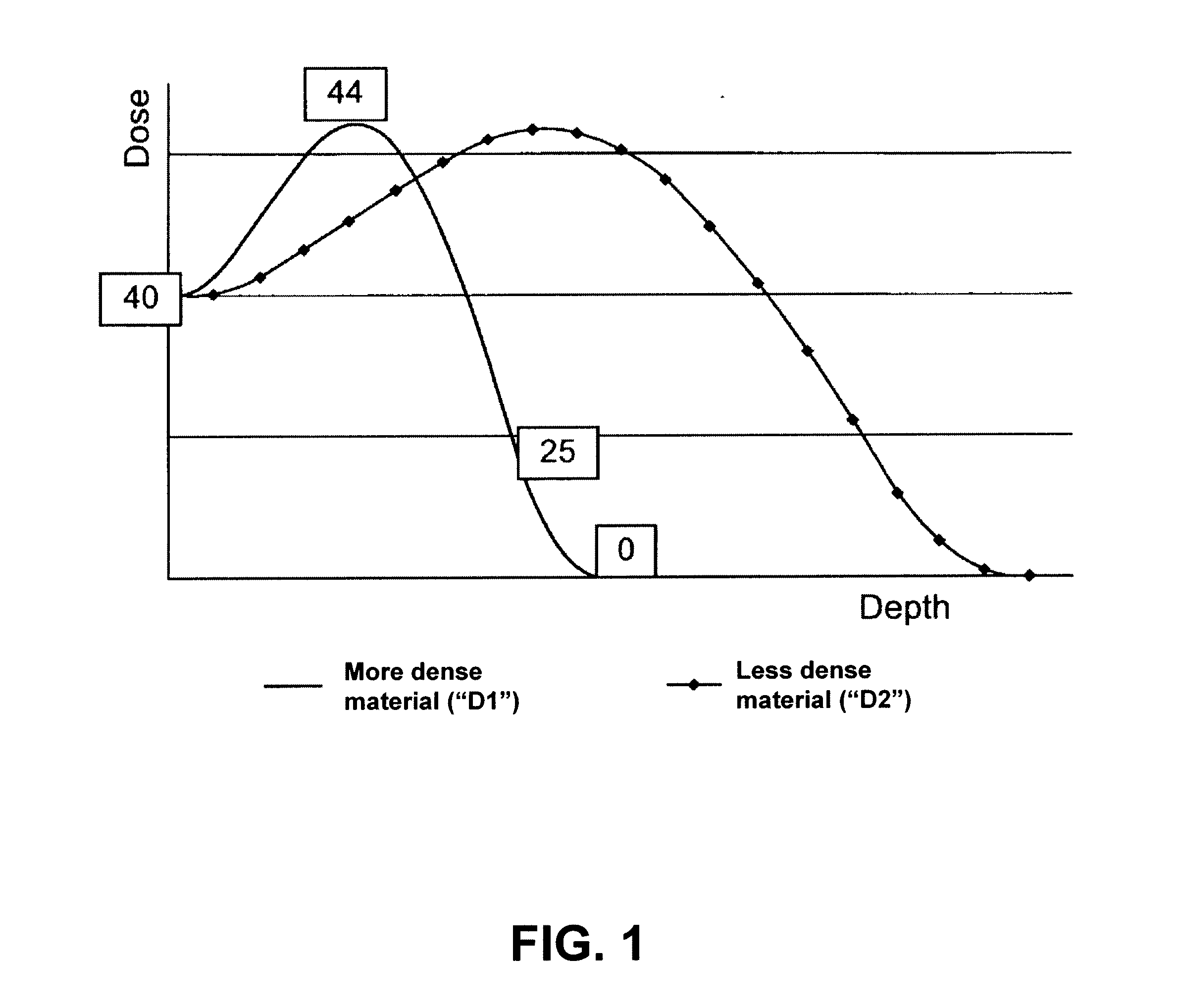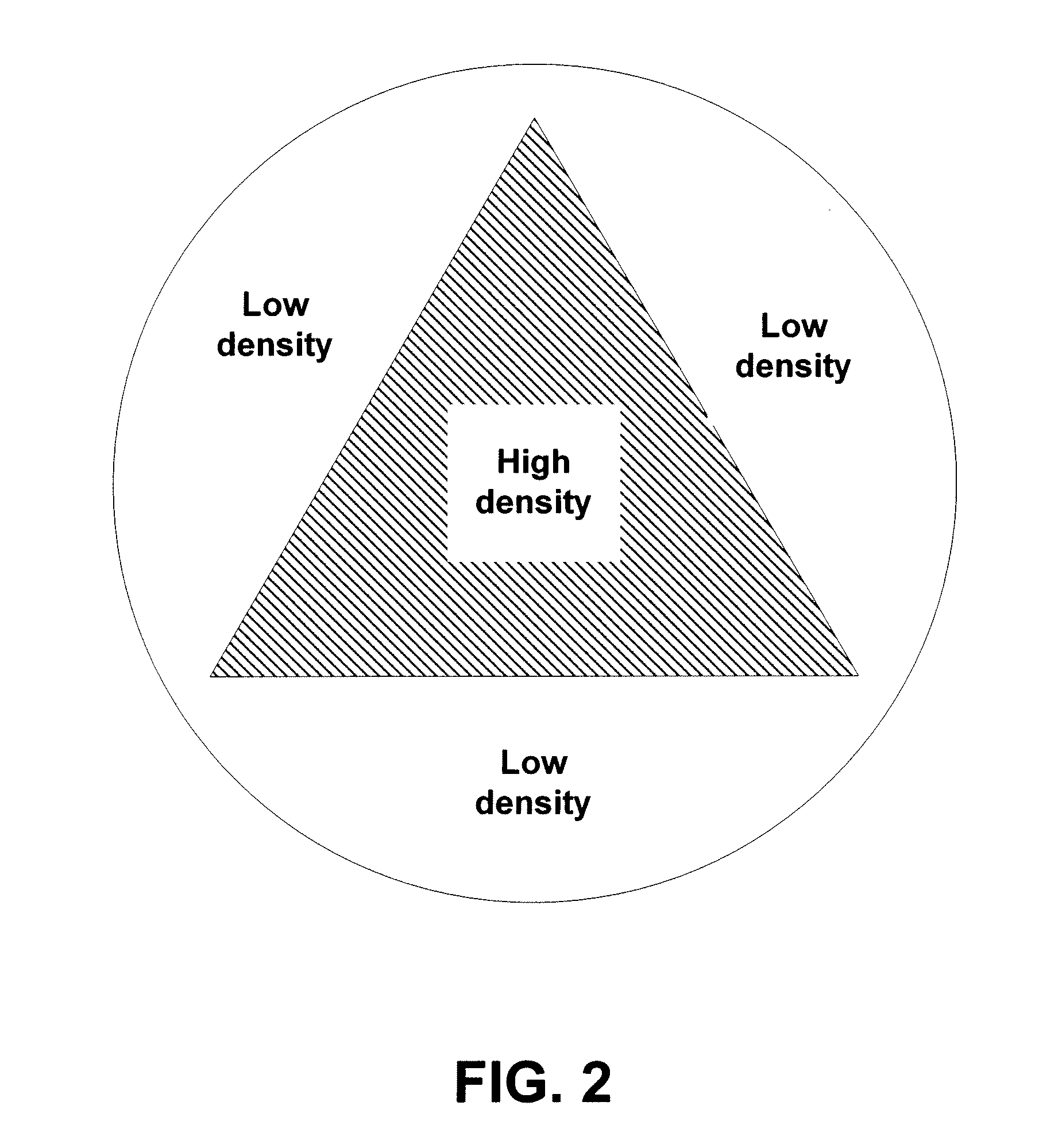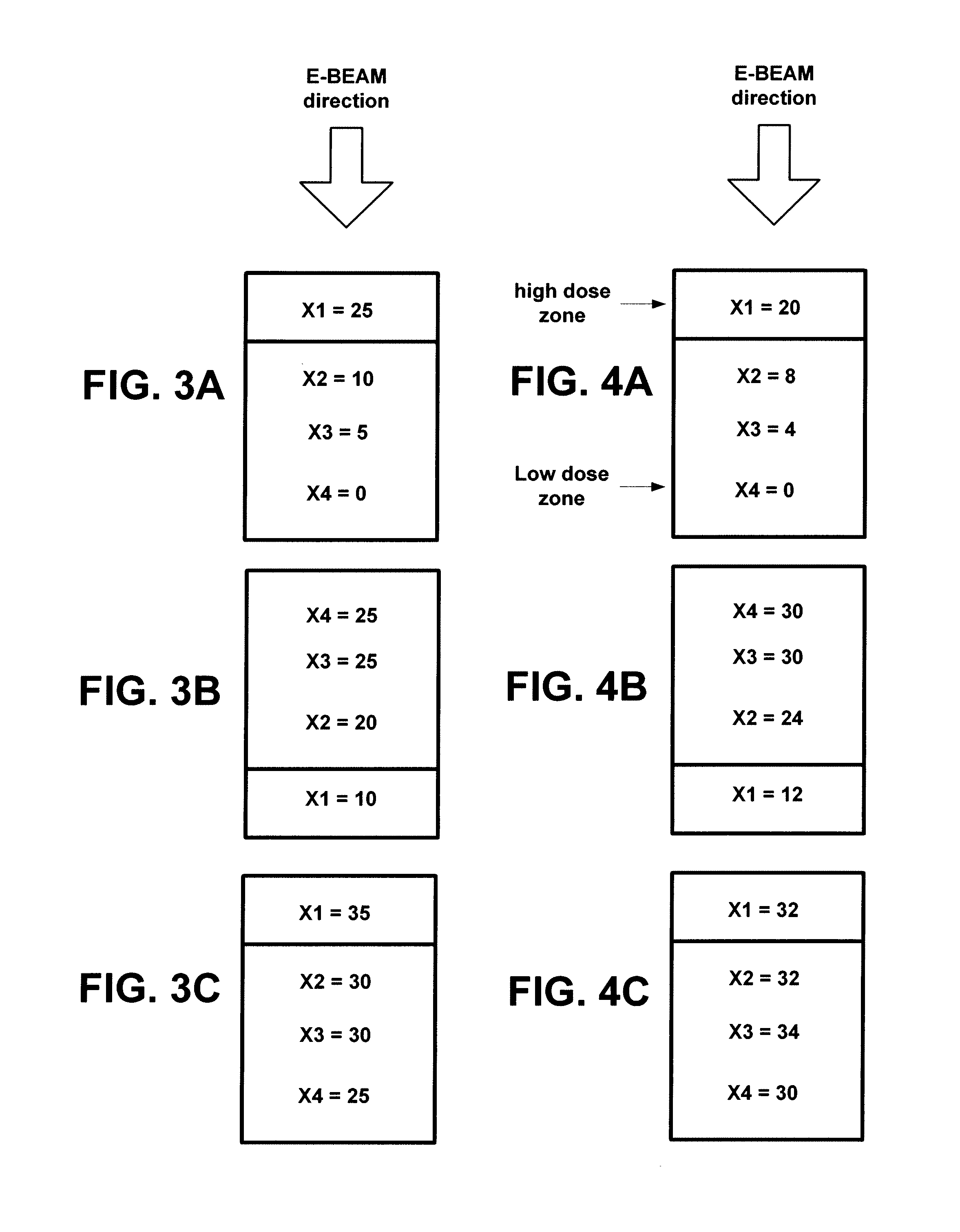Radiation sterilization of implantable medical devices
a medical device and implantable technology, applied in the field of medical devices, can solve the problems of reducing so as to reduce and minimize the radiation dose variance
- Summary
- Abstract
- Description
- Claims
- Application Information
AI Technical Summary
Benefits of technology
Problems solved by technology
Method used
Image
Examples
Embodiment Construction
[0032]FIG. 1 depicts a depth dose distribution curve illustrating the relationship between radiation exposure and depth of penetration of a radiation beam for materials with two densities. The curve shows the dose versus the depth of a material that the electrons travel through for two different densities, a higher density D1 and lower density D2. As depicted, the dose initially rises, then drops off, in each case. When the material is more dense, e.g., D1, the ramp up is more rapid and the decline in dose level verses depth is more rapid. For example, if a device is characterized as having the density D1 is irradiated with 40 kGy, the peak dose is at 44 kGy, and eventually drops down to, for example, 25 kGy and finally to 0 kGy upon further permeation through a material. The sharp ramp-up near the front face of the material having the higher density may be explained, at least in part, by the increased frequency of collisions between the incoming electrons and the denser material ne...
PUM
 Login to View More
Login to View More Abstract
Description
Claims
Application Information
 Login to View More
Login to View More - R&D
- Intellectual Property
- Life Sciences
- Materials
- Tech Scout
- Unparalleled Data Quality
- Higher Quality Content
- 60% Fewer Hallucinations
Browse by: Latest US Patents, China's latest patents, Technical Efficacy Thesaurus, Application Domain, Technology Topic, Popular Technical Reports.
© 2025 PatSnap. All rights reserved.Legal|Privacy policy|Modern Slavery Act Transparency Statement|Sitemap|About US| Contact US: help@patsnap.com



